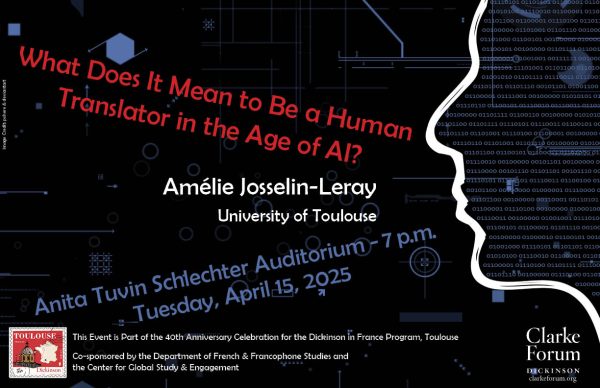Using Culture Shock as a Learning Experience
When I think about home, my mind conjures up vivid images of bright orange and red fireworks after a World Series win, horrific traffic clogging up the Caldecott Tunnel, Tuesday night food trucks, rainbow flags billowing in the June wind, and Dolores Park crowded with dogs and their eccentric owners.
When I considered moving into a small town over two hours out of the way of Philadelphia, I pictured dozens of houses with residents well over the age of 60 proudly cleaning their guns on the front porch. I may have also imagined a lot of horse and buggies with a bonnet bobbing up and down as the horse clicked down the road (I was not disappointed with that image).
Although that image was not an exact match to the reality of a small Pennsylvania town, it was not a far cry from it either. While my father and I made the drive from Dulles airport in Washington D.C. to Carlisle, we passed a myriad of “Trump/Pence 2016” posters and dozens upon dozens of American flags proudly hanging next to the garage door. This was when it suddenly began to sink in that I would no longer drive past hundreds of vehicles still toting “Obama/Biden” bumper stickers; there would no longer be hoards of thousands of people rallying for Black Lives Matter or anti-gentrification laws on a Sunday afternoon; I would no longer be in a state that is notorious for its progressivism, its diversity, its inclusivity, its power. I realized that myself, along with hundreds of other Dickinson students, would have to bring all of those components here through our own action.
Not only did the lack of “Bernie 2016” posters and LGBTQ flags during my drive from Dulles airport shock me, but the general lack of diversity confused me as well.
San Francisco has been an established sanctuary city since 1989, something that the city and its people take a lot of pride in. This inherently brings a large number of immigrants into the neighborhoods of the city each year, which, as one would imagine, also adds to the cultural, racial, and socioeconomic diversity of our home. Upon arrival in Carlisle, the number of white men over the age of 55 greatly out-weighed that of a person of color or young adult. I was desperately searching for a handful of twenty-somethings heading to their start-up company down the road or the local food trucks run by previous residents of Mexico, Ghana and India.
Before arriving on campus, I was struggling to answer the question: How am I supposed to smoothly transition from the bustling streets of San Francisco to the quiet town of Carlisle?
Although I have only been in Carlisle for a couple of weeks, I think I have my answer. My transition from urban to rural will be one filled with a lot of “Awwww how precious” and “Look at how cute this little shop is!” quickly silenced by the Confederate Flag sticker resting easily on the mirror at the local tattoo parlor. It will be admiring the gorgeous brick and stone buildings from decades ago only to realize they are almost all churches. In short, it will not be a quick transition nor a completely comfortable one, but it will serve as a learning experience, and, if nothing else, a time to solidify my own ideals and beliefs.



